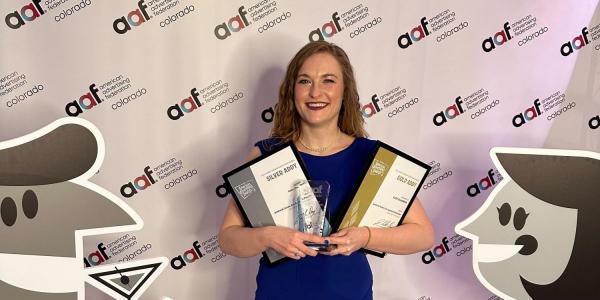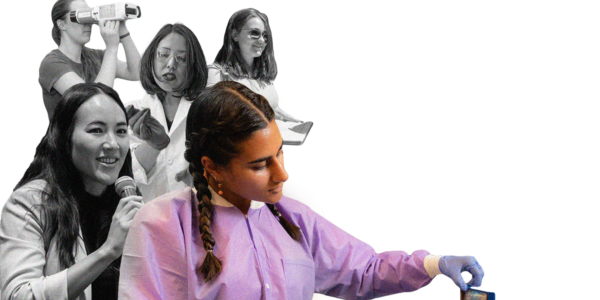As the Graduate School continues to expand professional development opportunities for its students, it launched the Graduate Liaison Program to foster better communication between the school and its students.
Graduate liaisons serve as the primary contact for communicating with other graduate students in their representative areas of arts, engineering, humanities, communication sciences, natural sciences and social sciences. Liaisons share Graduate School information about events and initiatives with their peers, and gather ideas about services that students believe would be helpful.
As the Graduate School began formulating new programming for career development, one of the obstacles that kept coming up was how to communicate with students.

“Communication is always an issue. We are so busy with our academic lives, personal lives and work lives. I want graduate students to know there are programs going on that can support their academic life and their future careers.”
–Shirley Huang, third-year doctoral student
“What we learned was that graduate students don’t always read their email,” said Gretchen O’Connell, senior assistant dean for the Graduate School. “They preferred hearing about activities and workshops from other students.”
The idea for having graduate students serve as liaisons between the school and the students was born from the need for student-to-student communication that would get students' attention.
The liaisons conducted focus groups in their areas to learn what students wanted and what they felt was missing. Some of the ideas that came out of the focus groups included having more activities on East Campus and being specific about naming workshops. There was confusion about the target audience of workshops based on how the titles were worded.
“There is a perception on campus that professional development activities are only for students in the STEM fields (science, technology, engineering and math),” O’Connell said. “It is actually just as valuable for students in humanities and the arts who may be looking for a career outside academia. How to translate the skills they’re learning in a way that is applicable to the wider job market, which is more challenging for the humanities.”
Learning to balance multiple needs
Now in its second year, the program is having a positive impact with attendance at activities growing, said Sarah Tynen, graduate program manager.
“The whole point of our graduate school is to be interdisciplinary,” Tynen said. “So, we really want to forge those connections across disciplines and address the gaps. Our graduate liaisons help us gather information about what we can do better, what’s missing, what students want to see more of, and what we’re doing right.”
Two of the six graduate liaisons talked about why they want to serve in that capacity.
Sarah Mauney is working on an MFA in dance performance and choreography. Her interest in serving as a liaison is two-fold: an advocate for herself as an artist grad student and the specific needs she has as a parent of a 2½-year-old daughter.
“There are more of us than people realize,” she said. “The needs of balancing graduate school with a life as a parent and caregiver are not often talked about. One of the biggest challenges is finding ways to get the information out in front of graduate eyes. My own studies are in dance, choreography and embodied research, but as a liaison, I’m also the go-to person for students in creative writing; fine arts; and visual, performative and cinema studies.”
An example of how needs can differ between STEM graduates and those in the arts is how information on résumés, CVs and cover letters for job searches is presented.
“I appreciate the job that our Graduate School does to address our needs,” Mauney said. “I want students to know their feedback is being heard and addressed, and that I will always pass information, needs, holes in terms of grad school offerings up the chain of command. They are always, always welcome to reach out to me through email. I want to utilize my position to further the cause of arts-based grads at this university.”
Policy career a third focus option
Shirley Huang is a third-year doctoral student in the Department of Speech, Language and Hearing Sciences. She studies language development and emotional well-being in bilingual preschool children. Based on her background as a former clinician working in low socioeconomic status communities, she became interested in science and health policy, advocating for communities and learning more about policy work.
“I only knew about the academia track and the industry track, but where was the science policy and health policy part,” she said. “I feel like it brings together my clinical background, my former advocacy work and my research. As a scientist, I think we need to have science inform the policies that are going to change an entire generation and create lasting change, so I wanted to get more involved in that.”
When Huang searched for workshops, classes or fellowships, she realized that few people were talking about a policy career path in her field. She contacted a representative at the American Association for the Advancement of Science (AAAS) to get more information. From that contact, Huang learned about this third option and wanted to pass that along to students interested in opportunities other than academia and industry.
“When I heard about the liaison program, it seemed like a great platform for me to share this kind of knowledge and to develop programs for students who want to learn about different career paths,” she said. “Communication is always an issue. We are so busy with our academic lives, personal lives and work lives. I want graduate students to know there are programs going on that can support their academic life and their future careers.”
The liaison program is also a professional development opportunity for the students who serve as liaisons. They have been tasked with creating a professional development opportunity for graduate students with a wide range of activities planned for this semester, from workshops to podcasts.
“What the student liaisons bring to the table are things we weren’t aware of, and they help us figure out strategies for those audiences we’re not reaching,” O’Connell said.
To learn more, go to Graduate Liaisons. For information on Graduate Liaison workshops, go to the Peer2Peer series.



